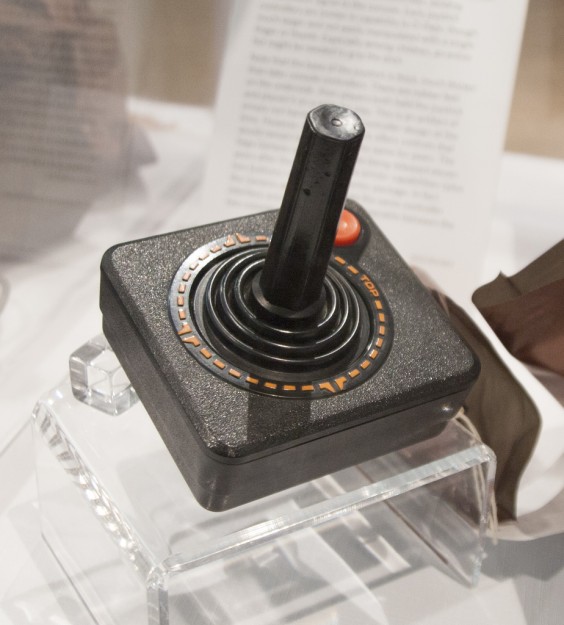Evolution of the Console Controller – Atari 2600 Joystick (1977)
The Atari 2600 Joystick is a tiltable stick attached to a base with one action button. It allows for four directions of input – eight when allowing for two directions at once. Modern joysticks allow for analog input, but early joysticks were usually digital and the Atari 2600 joystick was no exception. Tilting the stick in a direction completes a circuit within the controller, sending an electronic signal to the console. Early joystick controllers are similar in capability to D-Pads, though much larger and not easily manipulated with a single finger or thumb. Especially among children, an entire fist might be needed to grip the stick.
Note that the base of the joystick is thick, much thicker than later console controllers. There are rubber feet on the underside. Atari players both held the joystick and placed it on a table for play. This is an artifact of simply not having a standard controller design at the time. However, the Atari joystick offers controls that would remain fundamentally the same for years. The Sega Genesis controller, despite being released eleven years after the Atari 2600, has similar capabilities (plus two buttons) in a more ergonomic package. In fact, the Genesis and Atari 2600 use the same controller interface and controllers are interoperable between the two consoles.
Up to Classic Era – Back to Fairchild – Forward to River Raid
Gift of Linda and Laura Branagan, 2012.012.053

